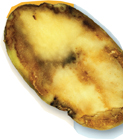21.3 The Ecology of Protists
Understand Key Concepts
Which of the following statements about photosynthetic protists is most accurate?
Most photosynthetic protists are heterotrophs.
All photosynthetic protists are closely related to plants.
Small photosynthetic organisms near the ocean's surface are called phytoplankton.
Giant kelp play an important role in the formation of coral reefs.
Slime molds are found primarily in
oceans.
decaying organic matter.
fast-moving streams.
deserts.
African sleeping sickness is caused by
Trypanosoma.
Plasmodium.
Trichonympha.
Amoeba.
Describe the nature of the relationship between a termite and the protists that live in its gut.
How do insects transmit malaria?
Think Critically
Form a Hypothesis A scientist observes that termites that are fed a certain antibiotic die of starvation after a few days. The scientist also notices that the antibiotic affects certain protists that live inside the termite's gut in a peculiar way: Although the protists continue to thrive, a certain kind of structure disappears from their cytoplasm. Develop a hypothesis to explain these observations.
Infer Slime molds produce sporangia and spores only when food is scarce. Why do you think this is so? What advantages do slime molds gain from this?
Predict Holes in Earth's ozone layer may increase the amount of radiation that reaches the surface of the ocean. If this radiation affects the growth of phytoplankton, what do you think the long-term consequences would be for Earth's atmosphere? Explain your answer.
Infer Examine the life cycle of Plasmodium shown in Figure 21–14. Based on the illustration, do you think malaria could be transmitted through a blood transfusion? Why or why not?
solve the CHAPTER MYSTERY

“A BLIGHT OF UNUSUAL CHARACTER”
In Ireland in the 1840s, conditions were just right for the rapid and devastating spread of potato blight. The potato had become a staple crop—the main source of food for the Irish population. The disease persisted from year to year because the new crop was grown from potato eyes saved from the previous year's crop. Genetically identical crops offered no new resistance to the blight.
What clues throughout the chapter point to the culprit's identity? Some of its features—notably, the presence of hyphae and the fact that it obtains food by absorption through its cell walls—are traits shared by both water molds and fungi. The final clue, however, is telling—the culprit's cells lack chitin and the hyphae are diploid. These traits eliminate the fungus option. The organism that causes the blight is a water mold—the protist Phytophthora—which literally means “plant eater.”

Phytophthora hyphae invading a potato
Relate Cause and Effect Observers in Ireland noted that the weather leading up to the summer of 1845 was unusually wet and cool. How might the weather conditions in 1845 have favored this organism's life cycle?
Infer Scientists now believe that Phytophthora came with some batches of potatoes from South America. Why hadn't the same organism caused such widespread destruction there?
Connect to the
 In the 1840s, one observer remarked that potatoes were grown so widely in Ireland that they formed “a continuous canopy of leaves.” In the United States, the same disease appeared several years earlier, but did not cause widespread famine. Why not?
In the 1840s, one observer remarked that potatoes were grown so widely in Ireland that they formed “a continuous canopy of leaves.” In the United States, the same disease appeared several years earlier, but did not cause widespread famine. Why not?
Table of Contents
- Formulas and Equations
- Applying Formulas and Equations
- Mean, Median, and Mode
- Estimation
- Using Measurements in Calculations
- Effects of Measurement Errors
- Accuracy
- Precision
- Comparing Accuracy and Precision
- Significant Figures
- Calculating With Significant Figures
- Scientific Notation
- Calculating With Scientific Notation
- Dimensional Analysis
- Applying Dimensional Analysis




